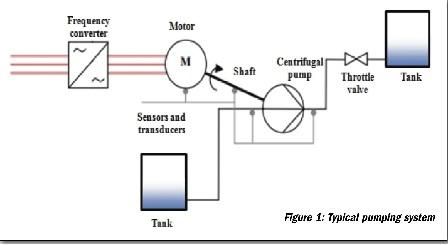Diagnostic and protection system for centrifugal pumps

Centrifugal pumps are widely used in industrial applications. Pumps driven by medium-to-low-power motors (70kW), for example, represent almost all of the installed machines deployed in oil & gas process plants. High energy consumption as well as the management, maintenance and downtime of pumping systems have a major impact on overall plant costs.
It is possible to improve process output and reduce machinery related production costs through the acquisition of real-time information about how the machinery actually works in order to generate the appropriate control actions. Such a system should provide:
• An optimal control action on the operational state of the pumping system using a minimum number of field transducers with a consequent reduction of installation costs
• Continuous automatic protection through the implementation of a pump performance model
The proposed system architecture provides continuous machine monitoring and diagnostics using an algorithm integrating field measurements and predictions of performance. The result is increased machine availability and reliability.
Typical pumping system
A typical pumping system consists of a driver, a centrifugal pump, valves and tanks. Advanced systems may include a VSD (Variable Speed Drive) block and sensors producing the variable feedback of the process (Figure 1).
In each instant of time, the overall process status can be described by a group of relevant process parameters (flow rate, liquid level, process pressures and fluid properties, and so on.), as well as pump operative parameters. The actual value of the process parameters depends on the coupling of the pump characteristic to that of the hydraulic load when the load changes, the operative state of the pump changes. Those pump parameters susceptible to variation are flow rate, suction and discharge pressure, power and the efficiency.
The selection of a suitable control system depends on factors, such as the plant configuration, the required operational process state, and economic factors. Such systems can use four main techniques for pumping systems control:
Throttle control; Bypass control; On and off control; and VSD control.
The first three techniques are simple and low-cost. But as they run the pump at a fixed speed, they are relatively inefficient, have higher energy consumption, machine wear and operating costs. While the VSD control approach is more efficient, it has the disadvantage of higher implementation costs.
Read more in the March/April 2015 issue of Turbomachinery International magazine